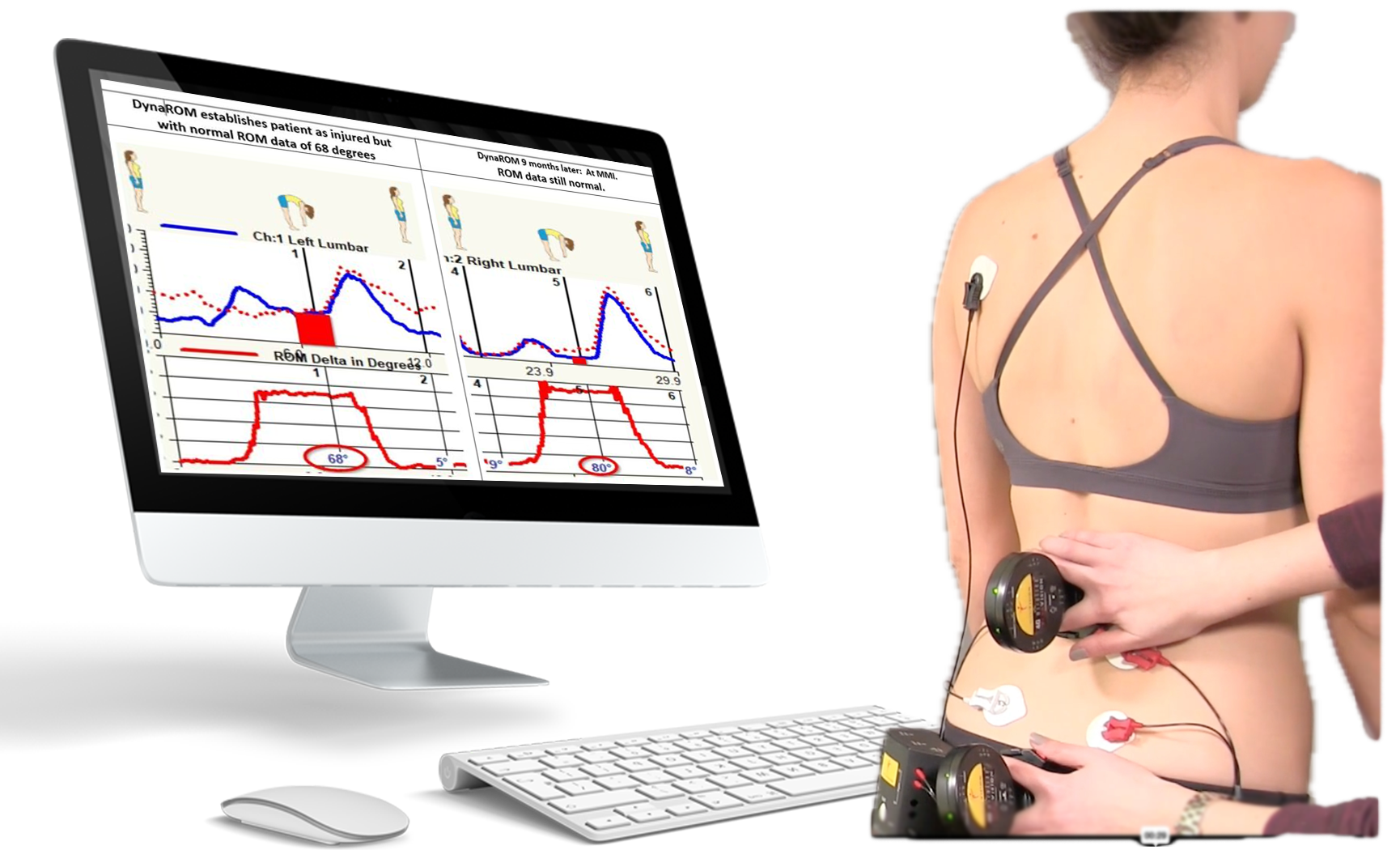Picture this: you’re a personal injury attorney with two clients, both injured in nearly identical rear-end collisions. Same speed, same whiplash symptoms—neck pain, stiffness, headaches. Both need compensation for property damage, medical bills, lost wages, and pain and suffering. But there’s a twist: one client sees a chiropractor using Clear DMX’s DMX and DynaROM tests, while the other sees a traditional chiropractor without them. As you build these cases, the difference in evidence shapes everything—from negotiations with insurance adjusters to the courtroom itself. Let’s walk through how this plays out and why testing can make or break the outcome.
Case 1: The Traditional Chiropractor
Your first client, Jane, gets a thorough exam—range of motion tests, a clean X-ray, and a report saying “cervical strain, improving with care.” Her chiropractor’s treatment helps, but months later, she still winces when holding her toddler or driving to work. She tells you, “It hurts when I do certain things, but the tests don’t show why.” You’ve got her subjective complaints and a basic report, but no hard proof tying her ongoing pain to the accident. You send a demand letter to the insurance adjuster, asking for $50,000 to cover bills, time off, and her lingering discomfort.
The adjuster pushes back: “X-rays are normal, and her motion’s fine—where’s the evidence this is permanent?” Negotiations stall. They offer $15,000, claiming her pain is exaggerated or unrelated. You could settle, but it won’t cover Jane’s needs. So, you file a lawsuit, heading to court. There, you’re stuck explaining her “I feel pain when I drive” to a judge or jury, with no objective data to back it up. The defense brings an expert who says, “No MRI findings, no problem.” It’s an uphill battle—hours of testimony to justify care and convince a skeptical jury her suffering is real, all while the insurance company bets you’ll fold.
Case 2: The Clear DMX Advantage
Your second client, Mark, sees a chiropractor who refers him to Clear DMX. He gets the same basic care as Jane, but with a game-changer: DMX and DynaROM testing. DMX shows ligament laxity and spinal instability in motion—damage invisible on static X-rays. DynaROM graphs reveal permanent muscle guarding with an AMA whole-body permanent Impairment of 5%, limiting his function even if his range of motion appears “normal.” This isn’t just evidence—it’s a roadmap. The chiropractor also knows precisely where the damage is, say, C5-C6 anterior longitudinal ligament instability with an AMA-Guide whole-body permanent Impairment of 25%. The report says: “Objective evidence of a permanent ligament damage causing muscle guarding, spinal instability, and impairment from the accident.” Mark’s story matches Jane’s—he hurts holding his kid or driving—but now you’ve got proof, and he’s got answers.
With this precision, the chiropractor sits Mark down and explains: “Your treatments helped, but this ligament damage and muscle guarding are why you still feel pain after all this time—it’s permanent, and here’s the data showing it.” Mark nods, relieved to understand his residual symptoms, trusting his care more than ever. You send the demand letter, this time for $150,000, armed with videos of Mark’s unstable neck and data proving his chronic impairment. The adjuster reviews it and hesitates. This isn’t subjective whining—it’s irrefutable, AMA-aligned evidence, with a diagnosis and prognosis no one can dispute. They could lowball at $40,000, but they know you’ve got a slam dunk if it goes to court. Settlement talks move fast; they offer $120,000 to avoid the risk. Why? Because if you take this to trial, the insurance company faces a judge or jury seeing Mark’s DMX footage—joints wobbling, muscles locking—and DynaROM numbers proving he’s not faking. It’s not a gamble they want to take.
How These Cases Progress
Personal injury cases like these follow a familiar arc: investigation, demand, negotiation, and—if needed—litigation. You start by gathering medical records, bills, and wage loss proof. For Jane, it’s a thin file—chiropractic notes and vague complaints. For Mark, it’s a fortress—Clear DMX reports with visuals, metrics, and a precise diagnosis of permanent damage. When you negotiate with adjusters, Jane’s case drags; they nitpick every treatment, questioning necessity without solid findings. Mark’s case cuts through the noise—adjusters see the tests, know the prognosis, and realize denial’s a long shot.
If settlement fails, court looms. For Jane, you’re on defense, explaining why her pain matters despite “normal” imaging. You might call her chiropractor to testify, but it’s words against the defense’s “no evidence” mantra. For Mark, you’re on offense. You play the DMX video, show the DynaROM graphs, and read the prognosis: permanent damage, clear as day. The jury doesn’t need a PhD to get it—his neck’s messed up, permanently, and it’s from the crash. The insurance company’s expert flounders; they can’t argue with what’s on screen.
The Testing Edge: Easier Wins, Bigger Rewards
With Jane, you’re fighting tooth and nail for scraps—maybe $30,000 after court, barely covering her bills. With Mark, the testing makes it smoother and bigger—$120,000 settled pre-trial, or $200,000+ if it goes to verdict. Why? DMX and DynaROM turn subjective “I hurt” into objective “here’s why—and here’s how bad it’ll stay.” Insurance companies hate risking a jury swayed by clear visuals and a solid prognosis over their “nothing’s wrong” defense. For Mark, it’s not just easier—it’s fairer. His award covers bills, lost work, and the permanent injury he now understands. For you, the attorney, it’s a higher commission—33% of $120,000 beats $30,000 every time.
The Attorney’s Takeaway
Two clients, two chiropractors, two outcomes. Without testing, you’re stuck justifying care with thin proof, battling adjusters and juries over every penny. With Clear DMX’s tests, you’ve got overwhelming evidence—cases settle faster, awards climb, and your firm thrives. Refer your clients to chiropractors using DMX and DynaROM, and you’re not just helping them—you’re building a pipeline for success. Want to see the difference in your next case? Connect with Clear DMX today and steer your clients to the proof that wins.









